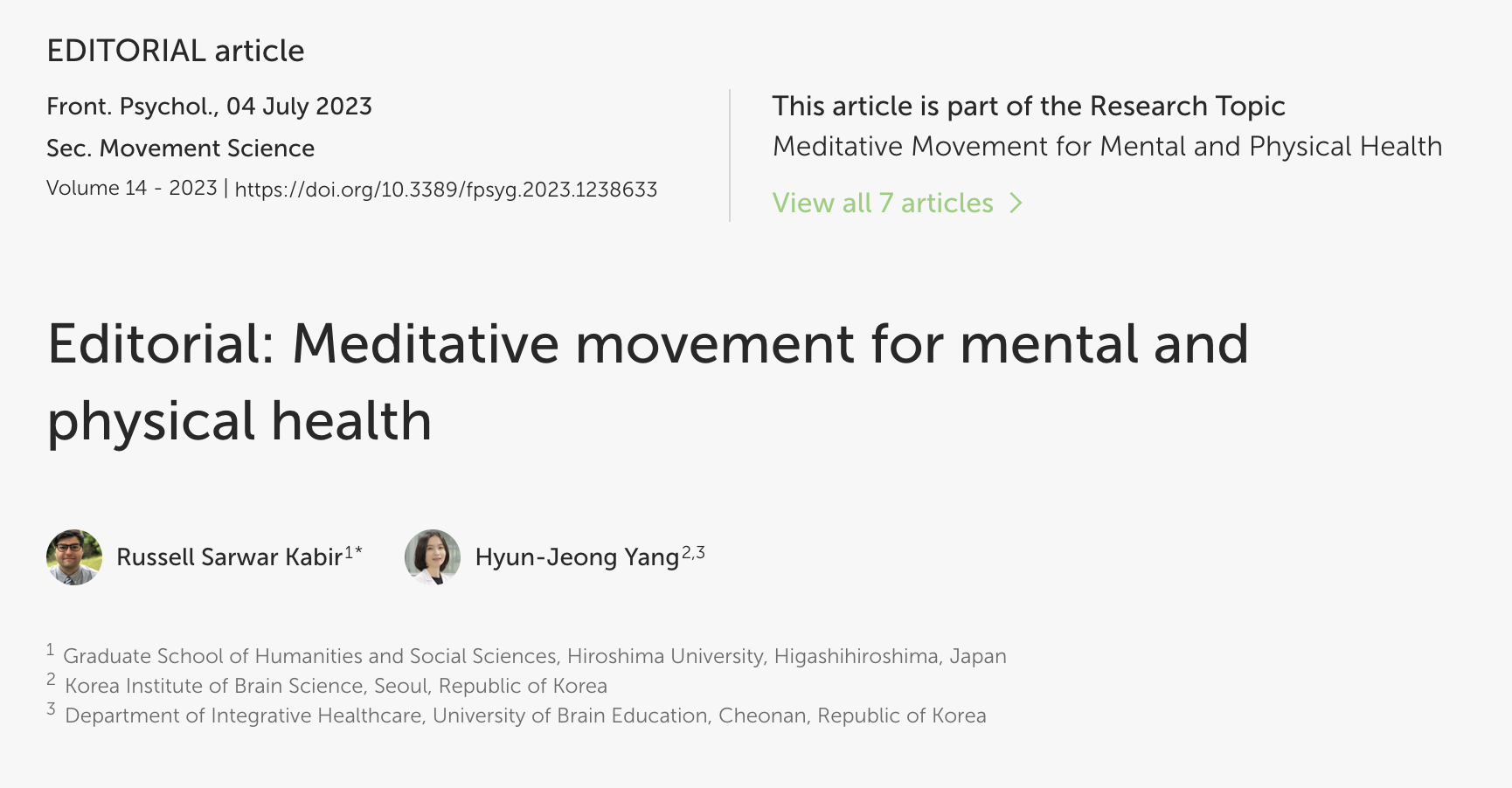[국제 학술지 EDITORIAL article 게재] Editorial: Meditative movement for mental and physical health
한국뇌과학연구원
view : 106
국제 학술지 ‘Frontiers in Psychology’에 EDITORIAL article가 게재 됐습니다.

"Editorial: Meditative movement for mental and physical health"
[Editorial on the Research Topic]
Meditative movement for mental and physical health
Agents of therapeutic change in mental and physical health promotion contexts, such as meditation and physical exercise, might enhance the regulation of internal states in ways that provide beneficial effects to human health and functioning. Behavioral health practices such as exercise, yoga, tai chi, qigong, Dohsa-hou, and other movement-related approaches offer platforms replete with the protective factors requisite for regulating physical activity and balancing mental states.
Coupling meditative elements into body movement processes is likely to have the advantages of inducing concentration more easily even among novice practitioners as it encourages focus on specific parts or senses of the body. Despite potential contributions to individual, social, and environmental categories of mental health and wellbeing, practices that invoke movement for these purposes are packaged in ways that require close inspection and evaluation of the specificity, duration, conditions, and limitations of their effects. For example, static meditation may be somewhat less accessible to beginners or those who have difficulty maintaining their concentration, and physical exercise at higher thresholds of intensity may not be accessible to groups with certain characteristics. These points suggest that dynamic meditative and movement-integrated applications might need to be introduced to users in cohesive or streamlined ways, in addition to leveraging their unique features and drawing upon the evidence base of their therapeutic or health-promoting elements.
The field of meditative movement research is relatively less developed in comparison to conventional meditation research, and far less developed than experimental and effectiveness studies of exercise and physical activity. Furthermore, while the movement and attentional processes that are common to contemplative practices play a role in the control and maintenance of physical and mental health, advances in the field tend to emphasize either physical exercise or psychosocial interventions and their effects on applied outcomes in isolation. This might be due to the dynamism inherent to cognition and movement and their related factors, or possibly, a lack of interdisciplinary exposure and coordination. In this effort, we aimed to improve the understanding of the effects of meditative movement on mental and physical health with research that highlights their potential to connect to underlying physiological, cognitive, or regulatory processes.
원문 참조 링크:
https://www.frontiersin.org/journals/psychology/articles/10.3389/fpsyg.2023.1238633/full

